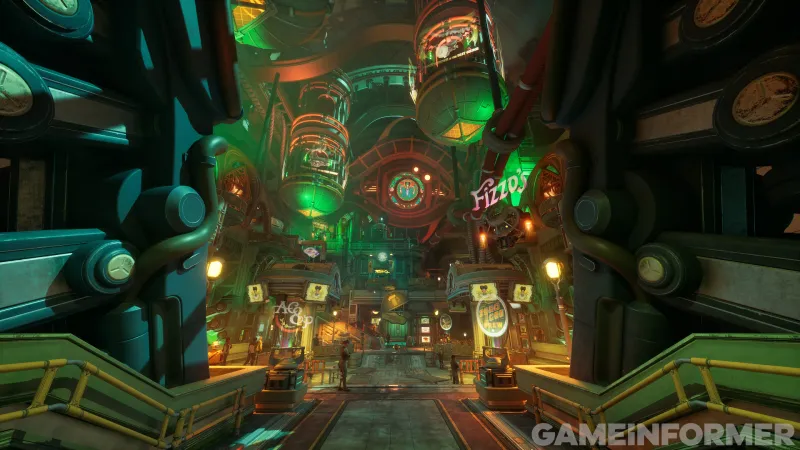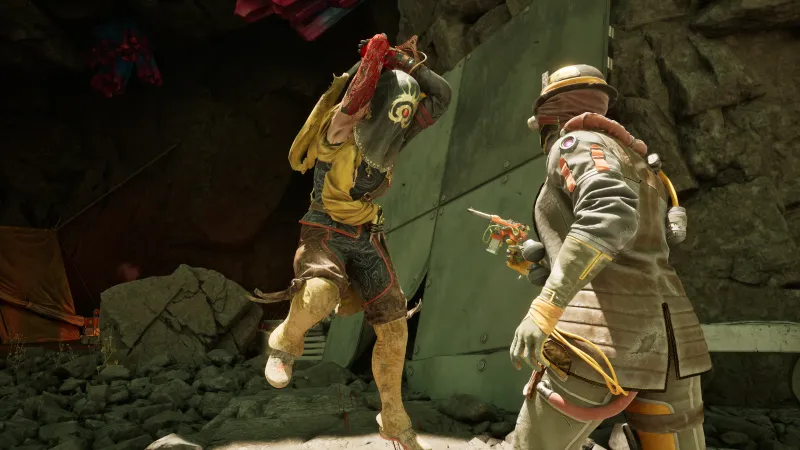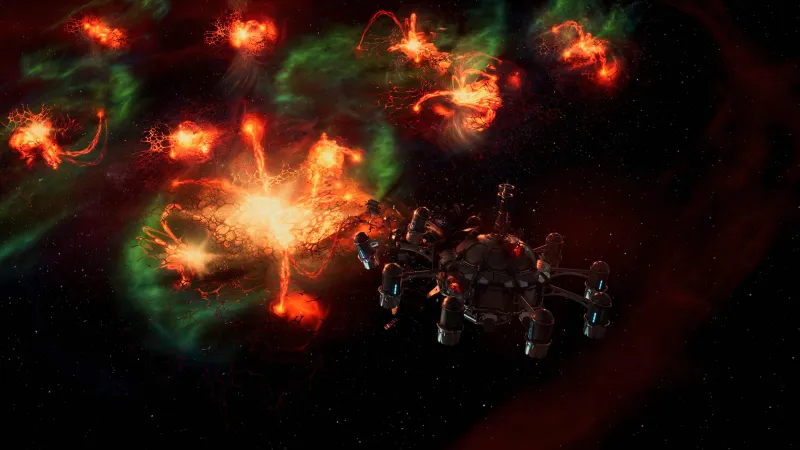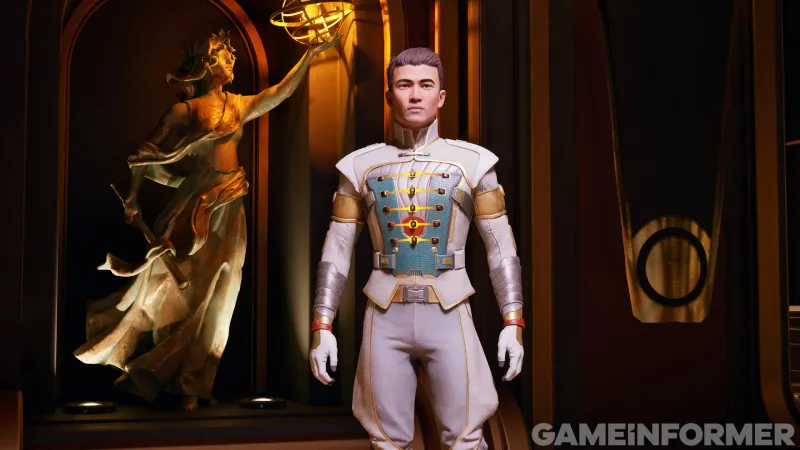The Outer Worlds 2 doesn’t drastically change the already great formula developer Obsidian Entertainment, which launched with The Outer Worlds over half a decade ago. Instead, this broad sequel follows in the footsteps of many other great RPGs, offering more places to explore, more loot to find, and, most importantly, plenty of up-to-date ways to directly influence and shape your own space adventure. While the main narrative is anticlimactic, I’m amazed at how much Obsidian manages to cram into this 30-hour odyssey, with side content that flows seamlessly in and out of the Golden Path, and a level of thoughtfulness that other RPGs often try to achieve, but fail to achieve.
The Outer Worlds 2 – video review:
Each player begins their journey as a member of the Earth Board, essentially a space cop, although the background you choose for your player-created hero determines why he or she ends up among the organization’s ranks. After cosmetic customizations and selecting some features that will gently shape your hero’s beginning, you’ll be thrown into a prologue with tutorials, hidden plans, and space-altering rifts. The Outer Worlds 2 begins with an explosion of mystery and intrigue, creating a puzzle worthy of the planet and space station heist you’ll soon be making; although this story ends nicely with a bow on top, I wanted more. It wasn’t rushed or poorly paced – it just lacked the structural density I found everywhere else.
However, as I watched the credits, perhaps the most overused cliché was still swirling around in my head, and I’m reluctant to employ it here: The Outer Worlds 2 isn’t about the destination; it’s about the journey.
From the moment I landed on Paradise Island, a lush, tropical seaside location on the Earth-like planet Eden, The Outer Worlds 2’s game cogs began spinning and rarely stopped (except for the moment when a body was humorously crushed by the literal gears of a moving platform during a side quest that allowed me to complete double jump in jet boots). Although Obsidian’s dialogue uses a veneer of comedy to keep most things lithe – even murder; especially murder – beneath the surface lies another moving examination of capitalism and religion. And while you may come to different conclusions based on what you bring to The Outer Worlds 2 and the decisions you make there, I’m glad this sequel challenged itself with both pointed writing and fun twists.
Capitalism is bad and so are the managers at the top, but what about the manager standing between them and the working class? How intrinsically related is the place of the bourgeoisie and religion in their ideal society? Are free markets ever really free? Obsidian isn’t breaking up-to-date ground here, but I like that it has something to say and gives me space in the dialogue and gameplay mechanics to respond in a similar way.

This is thanks to the excellent first-person shooting (and third-person camera for those who want it), which makes the atmosphere of the original game laughable. There are a set number of weapons, but modifications and minor changes such as plasma and shock variants do a good job of replicating a wider range of firearms and melee weapons to employ. The Legendary Weapons and the even rarer Science Weapons are fresh and unique, ensuring I’ll at least try each one in my growing arsenal. I particularly like the Moon Man machine gun, which levels up as you employ it, increasing damage and firing speed, and the bolt-action rifle, which applies a doom marker to enemies hit in feeble spots. Hand-to-hand combat wasn’t my speed in The Outer Worlds 2, but one rainbow sword that turned combat into a rhythmic game (complete with a evangelical pause for praise after enough consecutive hits) shows just how wild this type of weapon can be.
The enemy AI is clever and tactical, and I died more in The Outer Worlds 2 than in any recent memory RPG. I constantly adjusted my approach, grenade load, and when and how to employ the special abilities of my companions, such as Niles, who attracts aggro, or Aza, who unleashes an explosive, life-ending blast of flame at a targeted enemy to emerge alive. Enemy types, whether human, automechanic, or alien, play a role in combat that determines your strategy as you progress.

You can absolutely play The Outer Worlds 2 as a straight shooter, using bullets and explosions to break enemy lines, and there are elementary skills and perks like one that increases ranged damage and a perk that increases damage resistance to accommodate this style of play. However, The Outer Worlds 2 is a much better game if you interact with other systems to get what you want. With the exception of stealth, which was decent in exploration but unbalanced in combat, each approach to a situation I experienced felt unique, as if I was the only player who could complete it that way. I loved using dialogue to skip boss fights entirely, and Obsidian adds suspense to conversations I feared I might miss while avoiding gunfights, making the conversation as satisfying as Aza’s preferred method of murder.
I especially enjoyed side content such as side quests that facilitate escalate the effectiveness of each team member while revealing more about who they are, and standard side quests that range from crazy to sedate, connected to my hero’s main goal. Some missions simply offer more to do, such as tasks that tasked me with collecting comics or art, but most of these side quests provide insight into the leaders and organizations I negotiated with throughout the main story. What I learned from helping those in need throughout the colony often informed the bigger decisions I made to save Arcadia.

Companion quests are pretty hit or miss, some coming too overdue in the journey for me to care about them as much as I want, and others securing someone’s place as a constant member of my walking trio. Either way, it’s worth completing them all to be rewarded with a set of mods that change how each companion performs in combat. It was thanks to the companion quests and subsequent sets that I was able to assign them to archetypes that I felt were missing based on how I shaped my hero. As a more agile, smooth-talking marksman and shooter with an eye for cash, having someone like Tristan in the tank role along with Aza as the sneaky assassin helped round out my team.
While I’m not a gamer who’s that quick to replay something after completing it, The Outer Worlds 2 makes a compelling case for additional playthroughs, especially in how it teases out other ways I could have solved something. While the dialogue options, strategic choices, and other RPG elements kept my gameplay malleable, the returning Wada feature makes this sequel feel more reactive than most RPG adventures. Though optional, Disadvantages playfully invokes specific playstyles – like the one that rewarded my habitual desire to reload even a single round with a larger clip on all weapons, but reduced damage if I ever completely unloaded the clip – to make me feel seen, watched over by some meta-hand housed in Obsidian. I love this system, and I love that up-to-date flaws were revealed until the final minutes of The Outer Worlds 2, showing that even in the finale, how you play matters.

While the garish graphics may make some miss the more subdued, apocalyptic visuals of Obsidian’s past, The Outer Worlds 2 is the studio’s prettiest game yet, with contrasting colors painting a vivid colony system to explore, and while the result was far too meager in my opinion, the up-to-date radio skillfully makes up for the lack. It features Auntie’s Choice commercials that are reminiscent of the funny QVC segments my mother used to watch, propaganda songs that tell stories of the mighty Sovereign and Protectorate, and 20th century jazz tunes that will give you that Fallout itch. I like that several side missions come directly from this radio, as proximity chat for those in need.
There were a few lingering bugs, such as being unable to employ the D-pad when first entering the inventory or a few places where I had to reload a save to proceed, but even on PlayStation 5, which is outside the typical Obsidian and Xbox ecosystem, The Outer Worlds 2 ran well; My PS5 Pro in particular let the game sing with its silky 60 FPS performance and 1620p resolution (and the 40 FPS/4K balanced mode does just as well, if you prefer).
The Outer Worlds 2 eagerly fixes the shortcomings of its rather brief predecessor, fleshing out the formula to give players even more opportunities to shape the adventure. While your narrative will likely look similar to mine as you roll the credits, the choices you have, both in and out of combat, and what you do with them in various troubles throughout the game will provide a unique feel that will likely remain yours. The Outer Worlds 2 doesn’t stray from the mold of RPGs of this type, but it uses this well-established framework to create a reflective adventure that Obsidian has clearly been working on for years. The result is my favorite Obsidian game.

